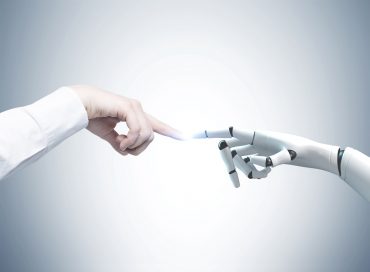
Industrial connectivity makes data (that has long been locked away) available to power the next generation of industrial transformation.
AI-powered operations have emerged as a significant opportunity to revolutionize industrial processes. The challenge isn’t simply implementing advanced algorithms or training models; manufacturers need secure and seamless access to industrial data.
For companies operating in environments with siloed systems and proprietary protocols, obtaining the data necessary to fuel AI is a complex task. As such, industrial connectivity is increasingly playing a pivotal role, providing the means to access, collect, and leverage data for AI-based decision-making.
The Data Challenge in AI-Powered Operations
In manufacturing, data is the foundation of any AI-driven initiative. From predictive maintenance to real-time quality control, AI algorithms depend on a steady stream of accurate, up-to-date information. However, many manufacturers operate within legacy environments, where data is often trapped in silos or locked behind proprietary protocols. Additionally, industrial environments typically feature a patchwork of systems – programmable logic controllers (PLCs), sensors, and other equipment – that rarely communicate with one another. This fragmentation results in several challenges, including:
Data Silos: Data generated by industrial systems and devices is not easily shared, creating isolated pockets of information. For instance, a temperature sensor might be feeding data to one system, while a separate pressure gauge is connected to another. Without a unified access point, this data cannot be easily integrated, analyzed, or shared.
Proprietary Protocols: Many industrial devices and systems use proprietary communication protocols, which can inhibit seamless data transfer. To that point, manufacturers often rely on equipment from multiple vendors, each with its own protocols and standards, making integration difficult and costly.
These challenges mean that even with the best AI technology in place, the benefits remain elusive without the necessary data to feed into AI models.
See also: Enabling IT/OT Convergence and Its Many Benefits
The Need for Industrial Connectivity
What’s needed? Industrial connectivity can address the challenges of data silos and proprietary protocols by serving as a bridge between disparate systems. To that end, an industrial connectivity solution can facilitate communication between legacy systems, modern equipment, and AI-powered applications.
Such a solution enables manufacturers to access and integrate data from across the facility in a way that supports AI initiatives. Common characteristics to look for in a industrial connectivity solution include:
- Protocol Bridging: Look for a solution that provides extensive protocol support, allowing it to connect to virtually any industrial device. The solution should have drivers for common industrial protocols such as Modbus, OPC UA, and more. That will ensure that data from different systems and devices can be captured and made accessible to AI applications.
- Data Aggregation and Normalization: In many manufacturing environments, data is not only stored in separate systems but is also structured differently depending on the source. A suitable industrial connectivity solution should collect and normalize data, creating a single source of truth that can then be fed into AI algorithms.
- Real-Time Data Availability: AI-driven operations often rely on real-time data to make decisions and predictions. An industrial connectivity solution should enable real-time data transfer between industrial devices and AI systems, allowing manufacturers to leverage up-to-the-minute information in their analyses. This immediacy is especially valuable in applications like predictive maintenance, where early detection of potential failures can prevent costly downtime.
See also: Data Democratization and Quality Key to Industrial Manufacturing Success
The Impact of Industrial Connectivity on AI-Powered Operations
Industrial connectivity is an essential tool that makes data that has long been locked away, ready to power the next generation of industrial transformation.
Some of the common AI applications that can be powered by virtue of easy access to industrial data include predictive maintenance, quality control, and process optimization. Such applications result is a more agile, efficient, and resilient manufacturing operation that can respond proactively to issues and adapt to changing market demands.









